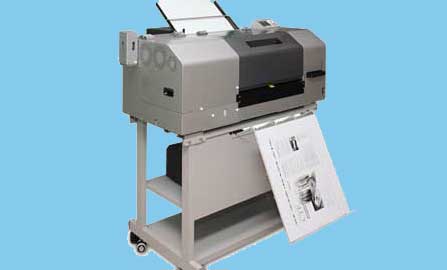
We are seeing the rise of the mega printer. Technology is killing the cottage print industry. In the USA, there are currently 38,000 companies in the graphic arts sector (pre-media, printing, repro, and finishing), of which less than ten per cent account for over 60 per cent of all print revenue. Eighty per cent of these companies account for less than 20 per cent of print revenue.
The trends shaping the printing industry permeate the advertising, marketing and publishing industries and affect, and are affected by, technology, processes, and products. The rise of the internet and the ability to be able to distribute vast quantities of data to diverse locations has taken the distance out of printing. The originator can be remote, the printer can be remote, and the customer can be remote.
It was not Computer-to-Plate (CtP) that changed the world. CtP is merely the tip of a giant iceberg called “workflow” — one level of process automation. Through the 1980s and 1990s film was a primary manufacturing medium for printers. All pages eventually wound up as film negatives, which were required to make plates. Pre-media services converted art and type to film and then “stripped” it up (assembled it) into composite form. For printers, film could come from outside sources, and this was especially true for publication advertisements. When all film units had been assembled, they were used to expose printing plates.
CtP requires all page content in electronic form. Since CtP systems were installed at the printing company, many content originators switched to dealing directly with the printer instead of the pre-media intermediary. CtP grew slowly from 1993 to 1998, but has exploded in the last few years, thus removing page volume from pre-media services. Today, CtP is mature and the majority of medium- and large-sized printers have implemented the technology.
Once the print job is in electronic form and essentially ready for reproduction, the relationship between buyer and seller changes. The need for scanning, colour correction and other prepress services moves back to the originator. Therefore, all printers seem the same.
In 1980, 70 per cent of all print was purchased from a printing company within 100 miles of the customer. Today that percentage is 45 per cent, and dropping. The ability to send files electronically and collaborate online for changes and proofing have made the physical location of the printing company less important. Thus, printers in the United States are doing business in many states beyond their own, and are capable of producing print for customers outside of the country. US print buyers are routinely purchasing print in Canada and the UK and in the Far East.
The one technology that profoundly changed the printing industry was the electronic delivery of files. In the past, the originator delivered a manuscript for conversion to type and then saw proofs; later he or she delivered mechanicals and then saw proofs. The printer controlled the prepress process and then desktop publishing became mainstream and the printer lost that control.
This loss coincided with the evolution of the personal computer, “shrink-wrapped” software, and the standardised page description language. Jobs could be designed and produced by the originator and then sent to any printing service — or to an in-house printing device. In the past the printer controlled the metal and later the film: the printer essentially “owned” the job. Today, the customer owns the job and they can send it to any printer, anywhere on the planet.
Thus, CtP led to jobs in totally electronic form, which led to originators taking on more of what printers and prepress services used to do, which led to electronic methods to move files from originator to reproducer, which led to printers being considered as mere output services. And that is another tale to be told.
Frank Romano is Professor Emeritus at the Rochester Institute of Techology in the USA. He is a widely respected contributor to a number of international print forums and a regular contributor to ProPrint.
Comment below to have your say on this story.
If you have a news story or tip-off, get in touch at editorial@sprinter.com.au.
Sign up to the Sprinter newsletter


